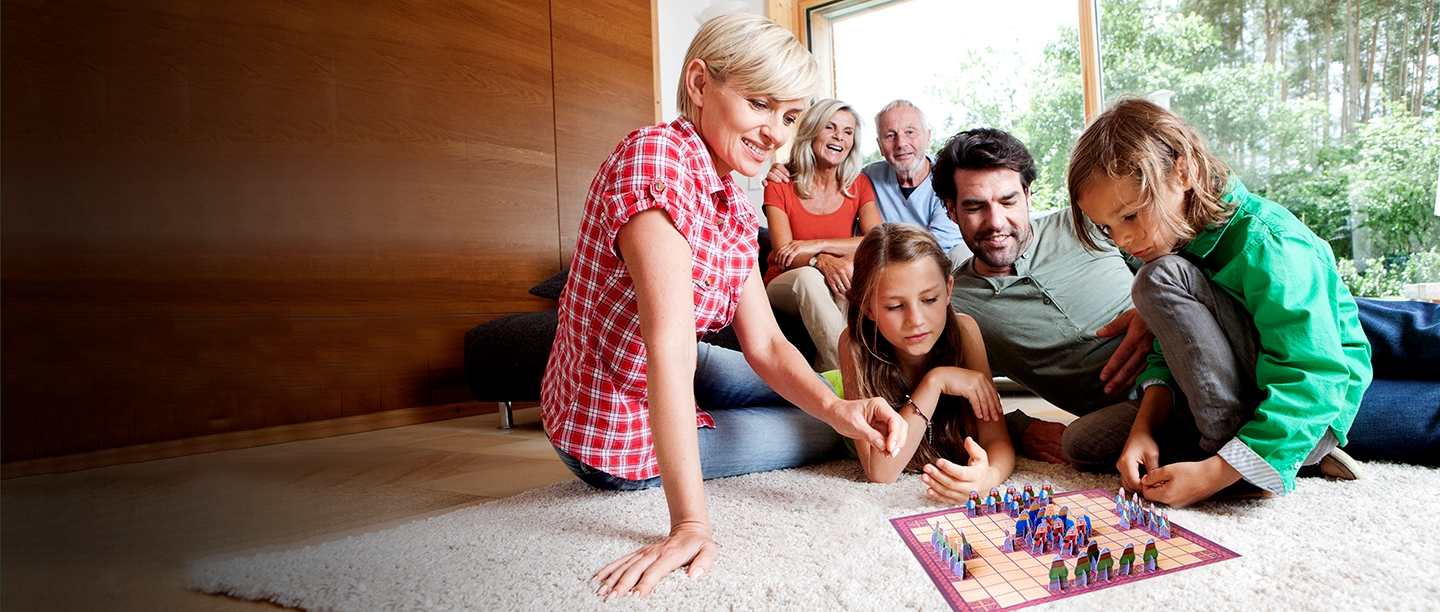A GAME FOR THE AGES
Vikings might have a fearsome reputation for raiding and invading, but they also enjoyed more sedate pastimes – albeit competitive ones! They would pit their wits against each other with a board game called hnefatafl, which means ‘The King’s Table’. Variations on the game were popular across Scandinavia, Britain and Ireland, and it’s thought it was based on an earlier Roman game.
There are references to hnefatafl (and its related games) in literature and in sagas from Iceland, the Orkneys and other countries where it was popular. And there’s archaeological evidence, too. Boards and pieces have been found with warrior burials, at religious sites and – in a few rare examples – in boat burials. A range of materials were used to make the boards and pieces, from simple wood boards to more elaborate amber, ivory or glass pieces.
A SPECIAL FIND
One of the most beautiful finds relating to the game is a piece that was discovered at Lindisfarne in 2019. Made from blue glass with white swirls etched around the outside and white glass droplets on the top, it looks like a crown. It was found in a trench dating from the 8th or 9th century – around the time that Lindisfarne Priory was destroyed by Vikings in their first major raid on England. It may have belonged to one of the invaders, or perhaps local Anglo-Saxons had already been introduced to the popular game (or played it after the invasion, adopting Viking customs).
MAKE YOUR OWN GAME
If you’d like to challenge your friends and family to a game of hnefatafl, it’s easy to make your own board and pieces. Click the button below to download a PDF of the board and pieces that you’ll need (we’ve made a colour version and one in black and white, so choose the right one for your printer). Follow the instructions on the PDF to assemble the game, and then read on to learn how to play…
DOWNLOAD THE BOARD AND PIECESHOW TO PLAY
This is a game for two players. Place the king in the centre square, and his defenders (the blue pieces biting their shields) in the patterned squares around him. Then place the invaders (the green pieces with beards) in the patterned squares around the edge of the board, leaving the four squares in the corners free. These, along with the centre square, are known as ‘the king’s squares’. Either the blue or green team can go first and then each team takes turns to move one piece at a time.
The aim of the game for the blue team is to defend the king as he attempts to escape to any of the four corner squares, or for the green team to ‘capture’ the king by surrounding him (either with four green pieces or three green pieces and the edge of the board or one of ‘the king’s squares’). The first team to achieve their objective is the winner.
All of the pieces can move in straight lines, horizontally or vertically, and can move as far as they want until they reach another piece. Pieces can’t jump over each other or pass through each other. When any of ‘the king’s spaces’ (in the centre or four corners) are unoccupied, they cannot be used by any other player (although players can pass over them). However, even when vacant, these spaces should be treated as though they are occupied. For example, if the king has moved to the space next to the central ‘king’s square’, he only needs to be surrounded on the other three sides to be ‘captured’.
Unlike the king, the defender and invader pieces only need to be surrounded on two opposing sides to be ‘captured’ and you can capture more than one piece at a time. If a defender or invader piece is in a space next to one of ‘the king’s squares’ it only needs to be surrounded on the opposing side to be captured. Captured pieces are removed from the board and play continues until either the king is ‘captured’ or the king successfully escapes to one of the four corner squares. The game is drawn if either player cannot move.
